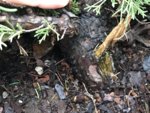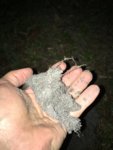drew33998
Masterpiece
I wanted to share the results of an experiment I conducted. I potted 7 shimpaku cuttings in napa oil dry 5 years ago. They have been in the same pots largely untouched except for me drilling holes in them last year to try to help percolation. I have fed with Osmocoat, Miracle Grow slow release, Bone Meal, Blood Meal, and a product recently, called Alaska fertilizer or something like it, fish meal with seaweed extract I believe. Much to my surprise the oil dry was not broken down into dust as I thought it would be. The top inch or so was the only part that had broken down in 5 years and that was a result of the fertilizer and mechanical action of rain, wind and watering I believe.















